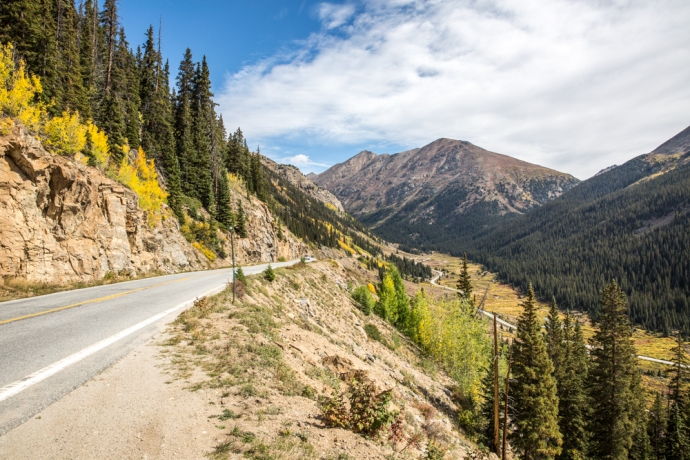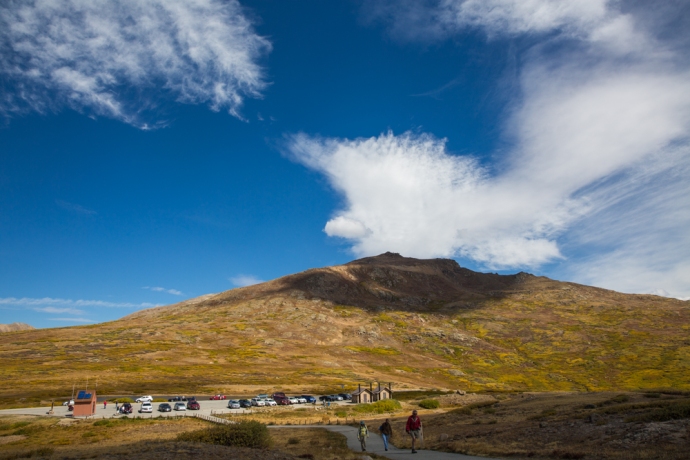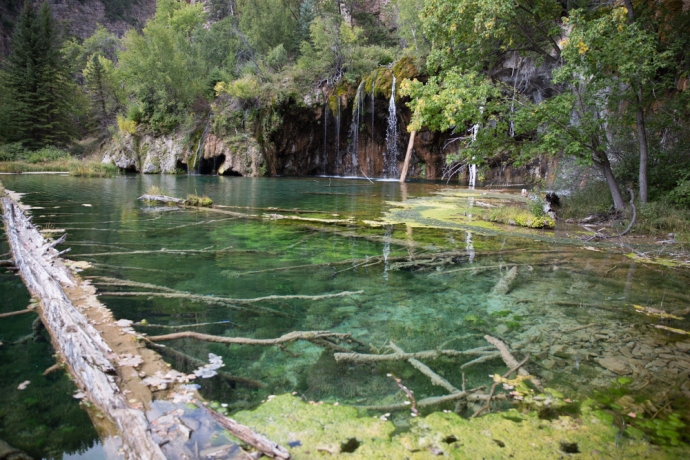
This is the third in a series of blogs on the Colorado Rockies following my visit during September 2018. In an earlier blog I looked at Twin Lakes. If you continue driving west from here along Highway 82 towards Aspen you cross the Independence Pass. That’s where we will go today.
Independence Pass is the highest paved crossing of the Continental Divide in the USA. The Divide runs like a spine through North and South America from the Beering Straits to the Straits of Magellan and marks the hydrological divide between rivers that drain into the Atlantic to the east and the Pacific to the west. Independence Pass reaches an elevation of 12,095 feet (3,687m) in the Sawatch Range. It is closed for much of the year, from October, due to extreme snowfalls. But this September day, clear blue skies greeted me and not a trace of snow.

An incredible drive up, switchbacks snake through forests of pine, spruce, fir and aspen and past lakes surrounded by soaring peaks many reaching as high as 14,000 feet (14ers as they call them in Colorado), luckily with a few pull-offs to admire and photograph the views.

A typical Colorado mountain scene on the way up Independence Pass

A huge switchback takes you from the valley floor to the top.
Near the top though there is a dramatic change as you enter the treeless alpine tundra environment of open grassland, low shrubbery, bare exposed rock and ephemeral pools.

Wild landscape at the top of Independence Pass

This ephemeral lake has dried up during the summer

The car park under an ‘exploding hill’ at the top of Independence Pass

arctic tundra
Everywhere you look you see the results of glacial action, the land being smoothed out during the last ice age about 12,000 years ago. The rocks of course are much older and comprise gneiss dating back 1,700 million years and younger intrusive granites.
The Pass has an interesting history. Spotted by Zebulon Pike in 1806, during his mapping of the southern boundary of the Louisiana Purchase, it wasn’t fully surveyed until 1873. It was the limit of European settlement at the time. West, the land was reserved for the Ute people and travel was prohibited but prospectors defied this and on July 4th 1879 discovered gold 4 miles from the pass on the Roaring Fork River, at a place which naturally became known as Independence. Eventually the mountain, lake and pass itself were given that name. Independence started a massive gold and silver rush and is now a fascinating ghost town. I will have more to say in an upcoming blog.
The original path over the pass was suitable only for horses but as Independence became a more permanent settlement, in 1881 the pass was improved so that stagecoaches could cross. A toll was charged and this paid for a team of men who shoveled snow through the winter to keep the road open. They were successful at doing this for five years but on occasions sleighs had to be used. A typical voyage over the pass required 10–25 hours and five changes of horses. A new road was built in 1927 and the current paved road in 1967. I took a little time to ponder the different obstacles and tribulations that the prospectors of Colorado had to deal with, compared with those in the Australian gold rushes. all incredibly hardy folk.
From the viewpoint at the top which looks east you can see a number of peaks including from left to right 1 Casco Peak (13,908 ft, which hides the highest mountain in Colorado, Mt Elbert at 14,433 ft), 2 Lackawanna Peak (13,661 ft). 3 Rinker Peak (13,783 ft), 4 La Plata (14,343 ft), 5 Star Mountain (12,941 ft) and 6 Ouray Peak (12,947 ft).

View looking east from Independence Pass showing major peaks.
An awesome feeling standing at the top of the world. Imagine the scene before me draped in snow. I didn’t want to leave, but when I did the view from the western side on the way down towards Aspen was just as good.

Over the pass and down the western side. A classic glacial valley.

Heading back beneath the tree line towards Aspen






















